What We Offer
With numerous universities featuring excellent facilities and accomplished academicians, securing admission to Australia’s top schools requires detailed planning. We transform this complex process into a structured, manageable journey.
University Research & Selection
Navigate Australia’s diverse university landscape with thorough research to identify institutions that perfectly match your academic goals, budget, and career aspirations.
Academic Profile Enhancement
Strengthen your application foundation by optimizing high school grades and academic achievements to meet stringent Australian university standards.
Standardized Test Preparation
Master essential tests including IELTS/TOEFL/PTE for English proficiency, GRE/GMAT for graduate programs, and UCAT ANZ/ISAT for medical school entry.
Application Strategy & Timeline
Develop comprehensive application timelines for Semester 1 (February-March intake) and Semester 2 (July-August intake) with strategic deadline management.
Document Preparation & Review
Perfect your university-specific application forms, letters of recommendation from counselors and teachers, and any required portfolios or video profiles.
Interview & Assessment Prep
Prepare for university interviews, auditions, and other assessment requirements with targeted coaching and mock practice sessions.
Visa Support & Compliance
Get complete guidance on the Australian student visa (subclass 500) process, including help with the Genuine Student (GS) requirement, which ensures your intent to study is clear and credible.
Join The Success
Our Students Study At
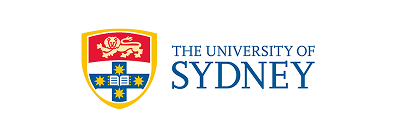
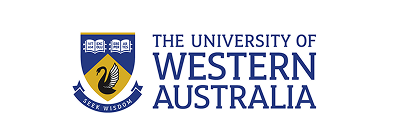
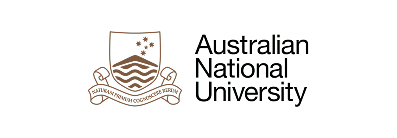
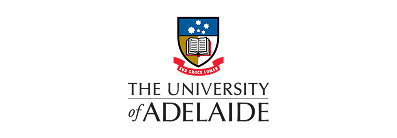
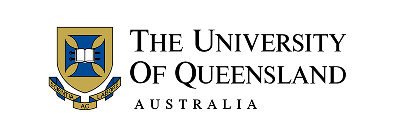

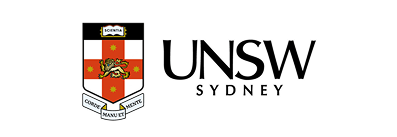
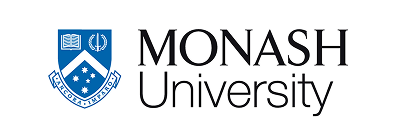
Why Choose UniHawk?
Expert Guidance
- Our counselors possess deep knowledge of Australian university systems, from Group of Eight institutions to specialized colleges across all states.
Strategic Planning
We provide structured approaches tailored to your experience, converting complex admission requirements into clear, actionable steps.
Comprehensive Support
- From initial university research to final visa applications, we guide you through every aspect of the Australian admissions journey.
96%
Students Get University Admits
Australian Dreams Achieved
91%
First Choice University Rate
Preferred School Success
280+
Students Guided To Australia
Proven Application Expertise
88%
Scholarship Success Rate
Financial Aid Excellence
4.8
Universities Per Student Applied
Strategic Portfolio Building
3.5 Months
Months Average Process Time
Efficient Application Journey
89%
Students Submit Before Deadline
Effective Timeline Management
Testimonials

Rayan Faisal

Shreeja Sharma

Rakshith Balaji
The Indian High School

Varun Ravi
Cambridge International School

Varshitaa Prasad
ABC International School

Ryan
LLFP Dubai
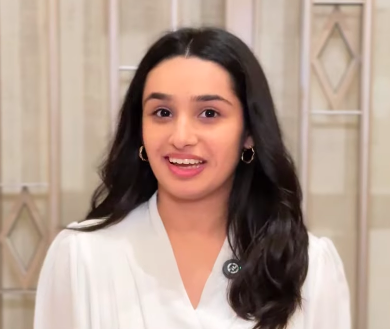
Dhruvi

Vanshi

Guntas Singh

Ratan

Vishal

Christine George
Dubai International Academy
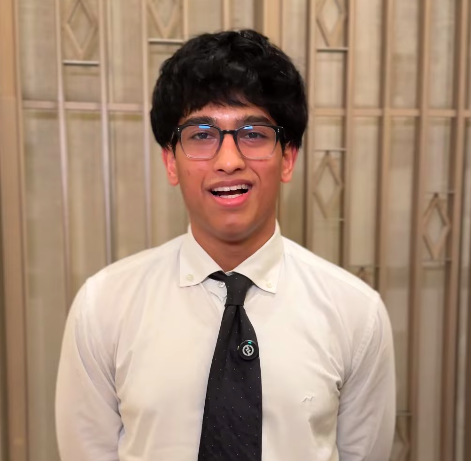
Neev Barua
Dubai English Speaking Schools

Thiya Jain
GEMS Modern Academy
Ivy League Dreams Built Through Determined Steps
Watch Prerita’s inspiring journey of hard work, dedication, and how she made it to the University of Pennsylvania (UPenn) with our guidance by her side.
Turning Passion For Medicine Into A Top University Admit
Witness how a childhood injury sparked Dhruv’s dream, leading him to Imperial College London. With our guidance and his determination, he aced the UCAT and turned vision into reality.
From Uncertainty To The University Of Helsinki
See how Arjun’s journey from indecision to determination shaped his future. With focused guidance and his resilience, he discovered the right path.
From UCAT 3050 To The University Of Manchester
See how Varshitaa turned ambition into achievement. With guided mentorship and everlasting efforts, she secured her dream seat in Medicine.
Turning A Dream Score Into Multiple University Offers
Discover how Garv’s exceptional SAT score of 1530, strategic planning, and dedication - combined with our expert guidance, led to admission offers from 7 top US universities.
Meet Your Counselors

Areesha Velani
Global Admissions Advisor
Areesha Velani, Director of Admissions at UniHawk, is an education consultant with over four years of educational experience. She hails from Pakistan, and grew up between Dubai and Texas to gain the unique perspective she has today. Armed with a Psychology and Business degree from Baylor University in Texas, she combines her expertise in education, marketing, administration, and psychology to guide students to top-tier institutions like Brown, Cambridge, McGill, UC Berkeley, and more.
Areesha’s passion for mentoring, coupled with her passion for travel, shapes her approach to empowering students on their educational journey. Interested specifically in adolescent psychology, she hopes to empower students in her holistic mentoring methods throughout their secondary educational experience.

Akshatha Achar
Arts Admissions Coach
Akshatha graduated from Emory University with a double major in International Relations and Music (vocal performance). At Emory, she was part of the Emory Concert Choir, the Emory Jazz Alliance, the university acapella group, and Theater Emory. During her time in Atlanta, she worked as an Economics Undergraduate Research Assistant and published research papers on a variety of political topics. She is also a supporting author in the Routledge Handbook on Arab Media, edited by Noureddine Miladi and Noha Mellor.
After working as a Writing Instructor at Emory for two years, she continued her work as an educational consultant in Dubai and has helped students secure placements at Yale, Princeton, Georgia Tech, Emory, UCLA, UC Berkeley, USC, Tufts, among other stalwart institutions in the US. She also has expertise in coaching students in art portfolio development- particularly those interested in pursuing the performing or visual arts. In only a couple of years, Akshatha will be a lawyer – with a graduate degree from Fordham University.

Ijaaz Jackaria
STEM & Ivy League Mentor
Ijaaz Jackaria was born and raised in Mauritius. He completed his BA at the University of Chicago on a full-ride scholarship, where he majored in Philosophy and minored in Physics and Middle Eastern Studies. During his time at UChicago, he interned in China and India in the field of Education Consulting. He was also the Director of a community-based education program in Chicago.
Post graduation, in 2019, he moved to Dubai where he worked for 3 years as a senior Educational Consultant. He has mentored hundreds of students, many of whom got admitted to the Ivy Leagues, Stanford, UChicago, UC Berkeley, etc. Several of these students also secured full financial aid from US universities. His “specialization” as a consultant is in the STEM field and traditional academic fields (Economics/Business/Humanities) for the top-tier undergrad programs in US/Canadian/UK universities.
Ijaaz recently completed a Master of Science in Comparative Education and International Development at the University of Edinburgh.

Rizwana Anjir Rahman
Global Admissions Counselor
Rizwana Anjir is a dedicated educator and counselor hailing from India, with an academic background boasting triple majors in Literature, Psychology, and Journalism. With over 8 years of experience in primary and secondary education, she is deeply committed to student-centered teaching methodologies, prioritizing active engagement, and empowering learners throughout their educational journeys.
She fosters inclusive learning environments and promotes student empowerment. Additionally, her impactful work in the non-profit sector as a youth mentor focused on bridging educational gaps for children from under-resourced communities within the Indian landscape.
Currently, her expertise extends beyond traditional teaching roles into career counseling, psychometric testing, student recruitment, and profile building for international students in the GCC. She excels in various facets of educational management, including classroom dynamics, lesson planning, curriculum design, and performance evaluation.

Jon Castro
Ivy Admissions Mentor
With over eight years of expertise in college admissions, Jon’s journey as an education consultant started after graduating from Middlebury College in 2014 when he moved to China. There, immersed in China’s rich culture and cuisines, Jon has helped hundreds of students achieve their academic goals, build incredible personal projects, and guide their progression into becoming capable young adults.
After 6 years in China, Jon moved back to his hometown, New York City, to help American students get into top American universities, find scholarships, and give back to their communities. He has helped students secure seats at all the top 50 schools, from the Ivies to art institutions and engineering colleges.
In his free time, Jon enjoys learning about cutting-edge tech, reading sci-fi, and cooking. Feel free to geek out with Jon on any of these topics or share with him anything that fascinates you!

Shokhrukh Nurmatov
Economics & Admissions Strategist
Shokhrukh Nurmatov graduated from Georgetown University in Qatar, majoring in International Economics and minoring in Government. He is an MBA candidate at NYU Stern, specializing in Finance and studying on an 85% scholarship. With a background in education consulting, he has supported over several students through the college admissions processes around the world. His students received offers from top universities like Columbia, UPenn, UCLA, and Georgetown, often getting accepted to 8 or more schools each. He also designed long-term academic and extracurricular plans and maintained an 80% conversion rate in consultations.
Before diving into the education field, Shokhrukh worked in data and strategy roles at Snoonu and Growth, where he developed dashboards in Tableau and provided insights to support business decisions. Outside of work, he enjoys youth mentoring and has competed in several business competitions, including the World Bank Group Case Challenge and Qatar’s QBIC Hackathon and QIC Program.

Arian Alexander Andalib
Astrophysics & People Connector
Arian Alexander Andalib (Ari) is a recent graduate of Michigan State University, where he earned a Bachelor of Science in Astrophysics with a Minor in Computational Mathematics, Science, and Engineering. Originally Iranian, born in the United States, and raised in Dubai, Ari brings a unique blend of cultural perspectives and international experience with him. Though he has a strong academic foundation in STEM, Ari’s true passion lies in connecting with people. He thrives in roles that allow him to communicate with an array of people and build life-long relationships.
While at MSU, Ari served as an undergraduate research assistant at the Facility for Rare Isotope Beams (FRIB), one of the most advanced particle accelerator facilities in the United States. His work focused on nuclear astrophysics, specifically mass accreting neutron stars. In addition to conducting research and writing research papers (of which he has co-authored 4), Arian also took in new undergraduate researchers, guiding them through the theoretical foundations and purpose behind their projects.

Sara Thennakoon
Higher Education Specialist
With over 4 years of experience in higher education counselling, I have supported students with university admissions in the UK, Australia, New Zealand, the US, Ireland, Finland and other European countries. I’ve worked with over 300 students, including several complex and sensitive profiles. My diploma in Psychology and Counselling from IMBS Green Campus, Sri Lanka, has helped me develop strong communication skills and a more personalised approach when working with students. I aim to understand each student’s situation and guide them in a way that suits their personality and needs. Working closely with both students and universities, I make sure the entire process runs smoothly from start to finish. This work is something I truly enjoy.

Rachel Mani
Higher Education Pathway Specialist
I am an experienced student counselor with over 5 years in the international education industry, guiding students toward higher education opportunities in Canada, Germany, Ireland, New Zealand, and the USA. I hold dual master’s degrees – an MBA in Media & Entertainment and an MA in Mass Communication (Journalism & PR) – which have equipped me with strong communication, counseling, and interpersonal skills.
My expertise lies in offering personalized guidance based on students’ academic goals, career interests, and financial background. I have successfully supported numerous students through the entire journey—from course and university selection to application, visa processing, and pre-departure preparation. I’ve also actively participated in school visits and education fairs across the UAE and Saudi Arabia, building strong relationships with both students and institutional partners.

Akshay Nair
Global Admissions Mentor
With over 3 years of experience in student counseling, I specialize in guiding students through every stage of the university admissions journey. I hold a Bachelor’s degree in Management Studies with a specialization in Finance from Mumbai University. My approach is personalized and student-focused, helping each individual confidently navigate course selection, applications, and visa processes. I’ve successfully supported students in securing admissions to top universities across the UK, the US, Australia, and Europe. I enjoy connecting with students, understanding their aspirations, and being part of their academic journey. Nothing excites me more than meeting new students and helping them take their first steps toward a global education.

Snehal Shewale
University Application Expert
With over a decade of experience in international education counseling, I specialize in guiding students through successful admissions to top universities in the USA, UK, Canada, Europe, and the UAE. I have mentored several students across a wide range of disciplines, including Business, Engineering, Fine Arts, and Medicine. My expertise lies in simplifying complex admission and visa processes, ensuring a smooth and confident transition for students pursuing higher education abroad. Dedicated to student success, I am committed to helping you achieve your academic and career goals.

Haider Abbas
Higher Education Specialist
With over 14 years of experience in higher education counseling, I specialize in guiding students toward academic paths that align with their unique strengths, goals, and interests. I take pride in understanding each student’s profile and providing personalized support throughout every stage of the admissions process, from program selection to application strategy and beyond. Whether students are applying to competitive programs or exploring diverse study destinations, my aim is to ensure they feel confident, informed, and well-prepared every step of the way.

Sheikh Owais
Global Admissions Specialist
With over 10 years of experience, I help students from around the world navigate their academic journey and secure admissions to top universities in the UK, USA, Canada, Australia, UAE, and Europe. I began counseling at Alliant International University in San Diego, CA USA in 2014, where I also lived the life of an international student.
A Magna Cum Laude graduate with three degrees (BBA, BSc IMC, MBA IMC), Throughout my career I have been a Teaching Assistant, Research Assistant, Enrolment Counselor, Account Manager and Sales & Marketing Specialist. I blend my marketing expertise with a deep understanding of global education systems. Having supported students from Europe, Central Asia, Southeast Asia, the GCC, North America and South America my focus is always on providing smart, personalized education solutions

Kajol Khemani
Personalised Student Advisor
With a background in Human Resources and a passion for student guidance, I support students through the university application process with a detail-oriented and personalised approach. My Master’s in Business Administration and Diploma in Interior Design help me connect with diverse student profiles, especially those applying to creative and business-related fields. I aim to make each student’s journey smooth and goal-focused, ensuring they feel confident and well-prepared at every stage.

Mashar Mirza
Global Education Consultant
With over 8 years of international experience across the UAE, India, and Malaysia, I have successfully guided students through the entire higher education journey – from initial inquiry to final enrollment. My approach combines personalized academic and career advising with practical support on program selection, application strategy, and visa procedures. A strong communicator and relationship-builder, I have developed lasting trust with students, parents, and education stakeholders. I’ve also led successful university partnerships and designed short-term and summer mobility programs, significantly increasing institutional visibility, enrollment, and global brand presence.
FAQs
Where should I apply to Australian universities?
International applicants must submit applications separately to each university – they do not go through a centralized admissions process. Applications can be done either online or via postal mail.
How many Australian universities can I apply to?
There is no fixed limit – you can apply to as many Australian universities as you wish, since each application is handled individually. However, we recommend applying to 4-6 universities to strike the right balance between ambition and practicality. This allows you to include a mix of dream, target, and safe options, improving your chances of admission while managing application effort and costs efficiently.
What types of universities exist in Australia?
Australia has more than 43 universities, including research-intensive institutions, technical and vocational colleges, and specialized art schools. Most are located on the east coast: around 21 in Brisbane, Sydney, Canberra, and regional parts of Queensland and New South Wales; 8 in Melbourne; 6 in Adelaide; 5 in Perth; and 1 in Darwin.
What are the Group of Eight universities?
The “Go8” refers to Australia’s eight leading research universities: Australian National University, University of Melbourne, Monash University, UNSW Sydney, University of Queensland, University of Sydney, and the University of Western Australia.
Are scholarships available at Australian universities?
Yes – Australia offers full and partial scholarships to international students, awarded based on factors like academic excellence, program of study, financial need, citizenship, and other criteria. These scholarships may be provided by universities, the Australian government, private organizations, public entities, or sponsors from the student’s home country.
How do I apply to study in Australia?
Your application generally includes academic transcripts, course preferences, and relevant employment history (if required). Personal statements or essays are typically not required for admission, but might be requested during visa processing. As part of the admission stage, you must also submit financial documents for review and complete a Genuine Student (GS) Statement to demonstrate your intent to study in Australia. Applications must be submitted by December for the first semester (starting February–June), and earlier than April–May for the second semester (starting July–October). Early application helps because decisions are often issued within weeks.
What’s required for an Australian student visa?
Most international students must apply for a subclass 500 student visa, except in certain postgraduate research cases. You must demonstrate proof of funds: at least 12 months of tuition fees, around AUD 21,041 for living expenses, and up to AUD 3,000 for travel costs.
